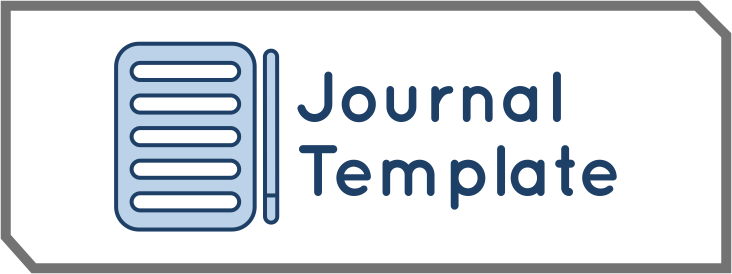Heptagon Fraud : Detecting Financial Statement Fraud in Indonesia’s Consumer Goods Manufacturing Industry
DOI:
https://doi.org/10.55606/ijemr.v4i1.313Keywords:
fraud heptagon, financial statement fraud, fraudAbstract
This study aims to identify the effectiveness of the heptagon fraud model in detecting fraudulent financial reporting within consumer goods sector companies listed on the Indonesia Stock Exchange (IDX). A quantitative research approach is employed, utilizing secondary data sourced from IDX-listed companies. The research population comprises consumer goods manufacturing firms listed on the IDX between 2019 and 2023. Based on specific selection criteria, 41 companies were chosen as the study sample. The data analysis involves various techniques, including descriptive statistics, the Overall Model Fit Test, the Hosmer and Lemeshow goodness-of-fit test, the coefficient of determination (Nagelkerke’s R-square), the Omnibus Test of Model Coefficients (F-test), and the Wald Chi-Squared Test (WALD). The findings reveal that the pressure has a significant positive impact on financial statement fraud. Meanwhile, arrogance is found to have a significant negative impact on the occurrence of financial statement fraud. In contrast, other factors, opportunity, rationalization, capability, ignorance, and greed do not exhibit a significant influence on fraudulent financial reporting.
References
ACFE. (2024). Occupational fraud 2024: A report to the nations (pp. 1–106).
Achmad, T., Ghozali, I., & Pamungkas, I. D. (2022). Hexagon fraud: Detection of fraudulent financial reporting in state-owned enterprises Indonesia. Economies, 10(1), 1–16. https://doi.org/10.3390/economies10010013
Achmad, T., Ghozali, I., Helmina, M. R. A., Hapsari, D. I., & Pamungkas, I. D. (2023). Detecting fraudulent financial reporting using the fraud hexagon model: Evidence from the banking sector in Indonesia. Economies, 11(1). https://doi.org/10.3390/economies11010005
Alfarago, D., Syukur, M., & Mabrur, A. (2023). The likelihood of fraud from the fraud hexagon perspective: Evidence from Indonesia. ABAC Journal, 43(1), 34–51.
Alyani, M., Satria, I., & Wahyoeni, S. I. (2023). The effect of fraud hexagon on financial statement fraud in property and real estate sector companies listed on the Indonesia Stock Exchange (IDX) in 2017–2021. International Journal of Economics, 3(2), 83–101. https://doi.org/10.35814/inquisitive.v3i2.4930
Azizah, S., & Reskino, R. (2023). Pendeteksian fraudulent financial statement: Pengujian fraud heptagon theory. Jurnal Akuntansi dan Governance, 4(1), 17–37. https://doi.org/10.24853/jago.4.1.17-37
Azizah, W. (2024). Can the fraud hexagon components detect fraudulent financial reporting? Golden Ratio of Financial Management, 4(2), 78–86. https://doi.org/10.52970/grfm.v4i2.447
Barezki, M. B., Fuadah, L. L., & Yulianita, A. (2023). Relevansi fraud hexagon theory terhadap kecurangan laporan keuangan pada sektor perbankan di Indonesia tahun 2017–2021. Jurnal Informatika Ekonomi dan Bisnis, 5(3), 927–931. https://doi.org/10.37034/infeb.v5i3.650
Crowe. (2011). Why the fraud triangle is no longer enough. Crowe LLP.
Davidson, R. H. (2022). Who did it matters: Executive equity compensation and financial reporting fraud. Journal of Accounting and Economics, 73(2–3). https://doi.org/10.1016/j.jacceco.2021.101453
Dechow, P. M., Ge, W., Larson, C. R., & Sloan, R. G. (2011). Predicting material accounting misstatements. Contemporary Accounting Research, 28(1), 17–82. https://doi.org/10.1111/j.1911-3846.2010.01041.x
Djami, R. A., & Murtanto, M. (2024). Factors that influence fraud heptagon theory on financial statements fraud (empirical study on the mining sector listed on the Indonesia Stock Exchange for the period 2018–2022). Journal of Research in Social Science, Economic and Management, 4(1), 85–103. https://doi.org/10.59141/jrssem.v4i1.701
Ghaisani, A. A., & Supatmi, S. (2023). Pendeteksian kecurangan pelaporan keuangan menggunakan model fraud diamond. Portofolio: Jurnal Ekonomi, Bisnis, Manajemen, dan Akuntansi, 7(1), 599–611. https://doi.org/10.33395/owner.v7i1.1233
Ghaisani, A. A., & Supatmi, S. (2023). Pendeteksian kecurangan pelaporan keuangan menggunakan fraud pentagon. Owner: Riset dan Jurnal Akuntansi, 7(1), 599–611. https://doi.org/10.33395/owner.v7i1.1233
Indriaty, L., & Thomas, G. N. (2023). Analysis of hexagon fraud model, the S.C.C.O.R.E model influencing fraudulent financial reporting on state-owned companies of Indonesia. Innovative Economics Research Journal, 11(1), 73–92. https://doi.org/10.2478/eoik-2023-0060
Jannah, V. M., & Rasuli, A. M. (2021). Pendekatan Vousinas fraud hexagon model dalam mendeteksi kecurangan pelaporan keuangan. Studi Akuntansi dan Keuangan Indonesia, 4(1), 1–16. https://doi.org/10.21632/saki.4.1.1-16
Jensen, M. C., & Meckling, W. H. (1976). Theory of the firm: Managerial behavior, agency costs and ownership structure. Corporate Governance: Values, Ethics and Leadership, 4, 77–132. https://doi.org/10.4159/9780674274051-006
Lestari, M. I., & Henny, D. (2019). Pengaruh fraud pentagon terhadap fraudulent financial statements pada perusahaan perbankan yang terdaftar di Bursa Efek Indonesia tahun 2015–2017. Jurnal Akuntansi Trisakti, 6(1), 141–156. https://doi.org/10.25105/jat.v6i1.5274
Pamungkas, I. D., & Irwandi, S. A. (2024). Detecting fraudulent financial reporting: Heptagon fraud model. Tiar, 14(2), 153–174. https://doi.org/10.14414/tiar.v14i2.4523
Pamungkas, I. D., Oktavianasari, I. R. A., Jasmine, A. N., & Nuswantoro, U. D. (2024). The role of audit committee and institutional ownership as moderating: Analysis fraud heptagon in Indonesia. WSEAS Transactions on Business and Economics, 21, 2665–2677. https://doi.org/10.37394/23207.2024.21.218
Rahman, J. M., & Ying, Y. (2020). The effects of corporate governance and managerial compensation on financial fraud: Evidence from China. Accounting, Business and the Public Interest, 280–296. https://doi.org/10.2139/ssrn.3739800
Rostami, V., & Rezaei, L. (2022). Corporate governance and fraudulent financial reporting. Journal of Financial Crime, 29(3), 1009–1026. https://doi.org/10.1108/JFC-07-2021-0160
Sari, S. P., & Khoiriah, A. (2021). Hexagon fraud detection of regional government financial statement as a fraud prevention on the pandemic crisis era. Wacana: Jurnal Sosial dan Humaniora, 24(2), 90–97.
Setyono, D., Hariyanto, E., Wahyuni, S., & Pratama, B. C. (2023). Penggunaan fraud hexagon dalam mendeteksi kecurangan laporan keuangan. Owner: Riset dan Jurnal Akuntansi, 7(2), 1036–1048. https://doi.org/10.33395/owner.v7i2.1325
Sihombing, T., & Panggulu, G. E. (2022). Fraud hexagon theory and fraudulent financial statement in IT industry in ASEAN. Jurnal Reviu Akuntansi dan Keuangan, 12(3), 524–544. https://doi.org/10.22219/jrak.v12i3.23334
Siregar, A. T., & Amirya, M. (2024). Pengaruh gender diversity dan efektivitas komite audit dalam mendeteksi kecurangan laporan keuangan. JIMAT (Jurnal Ilmiah Mahasiswa Akuntansi) Undiksha, 15(1), 70–83. https://doi.org/10.23887/jimat.v15i01.75372
Situngkir, N. C., & Triyanto, D. N. (2020). Detecting fraudulent financial reporting using fraud score model and fraud pentagon theory: Empirical study of companies listed in the LQ45 Index. Indonesian Journal of Accounting Research, 23(3), 373–410. https://doi.org/10.33312/ijar.486
Skousen, C. J., Smith, K. R., & Wright, C. J. (2009). Detecting and predicting financial statement fraud: The effectiveness of the fraud triangle and SAS No.99. Corporate Governance and Firm Performance (Advances in Financial Economics), 53–81. https://doi.org/10.1108/S1569-3732(2009)0000013005
Tarjo, T., Anggono, A., & Sakti, E. (2021). Detecting indications of financial statement fraud: A hexagon fraud theory approach. Akrual: Jurnal Akuntansi, 13(1), 119–131. https://doi.org/10.26740/jaj.v13n1.p119-131
Yusof, K. M. (2016). Fraudulent financial reporting: An application of fraud models to Malaysian public listed companies [Doctoral dissertation, University of Hull].
Downloads
Published
How to Cite
Issue
Section
License
Copyright (c) 2025 International Journal of Economics and Management Research

This work is licensed under a Creative Commons Attribution-ShareAlike 4.0 International License.







